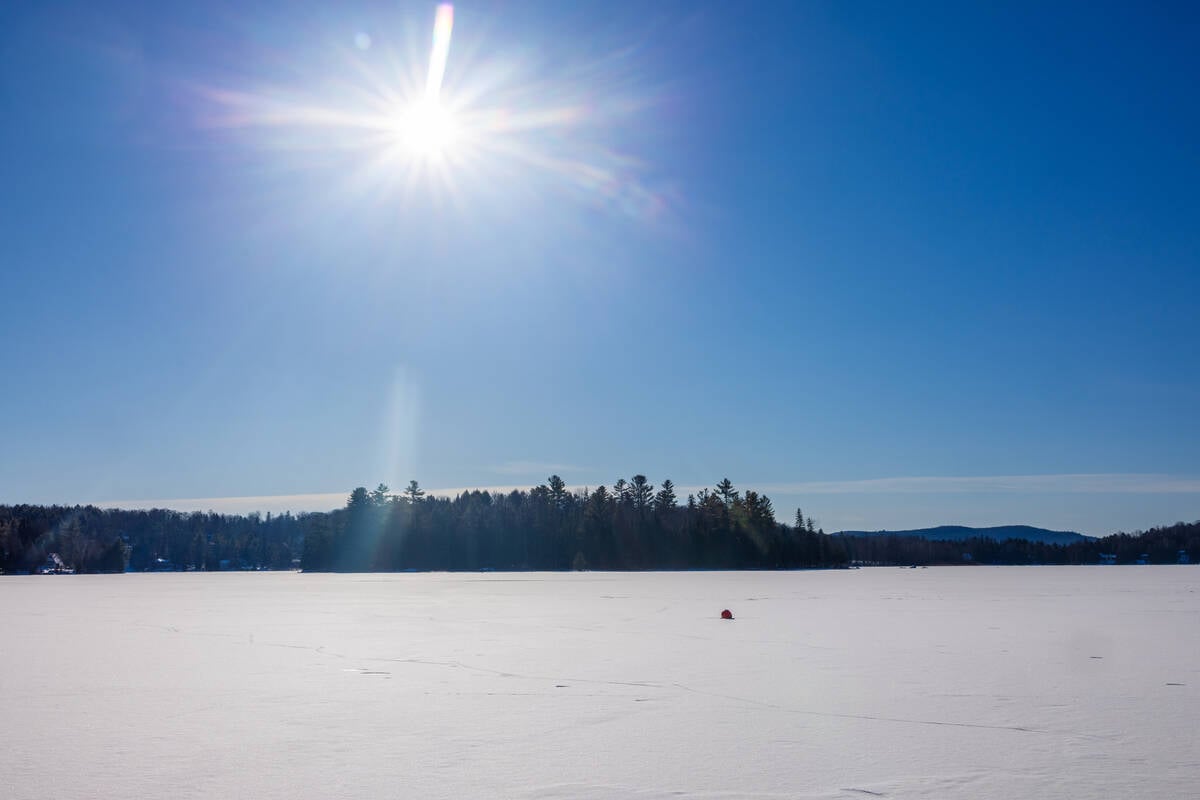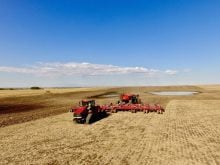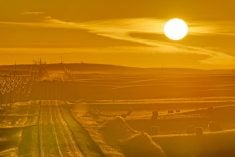Glacier FarmMedia — With all the global air temperature records that have been set over the last few years, something else has almost slipped by: record-warm global ocean temperatures.
A lot of implications arise from increased ocean temperatures. One of these is the significant increase in ocean evaporation which, thanks to a question from one of our readers, is this week’s topic.
In past columns, when I’ve discussed ocean temperatures, I talked about coral bleaching events and how warm temperatures cause the water of the oceans to expand, leading to rising ocean levels. Earth’s oceans cover over 70 per cent of the planet’s surface, and they are a massive heat sink, absorbing more than 90 per cent of the excess heat trapped by greenhouse gases. As ocean temperatures rise, the rate of evaporation also accelerates, injecting vast amounts of water vapour into the atmosphere.
Read Also

Health hazards are often overlooked risks on the farm
While quite different from the dangers posed by farm machinery, hazards such as loud noise or sun exposure require the same proactive attention, the Canadian Agricultural Safety Association says.
This may seem like a small shift in what’s seen as a natural process, but the consequences can be big. Increased evaporation fuels stronger storms, altering precipitation patterns and amplifying climate feedback loops that may drive further warming.
So, what exactly is happening beneath the waves — and how is this surge in evaporation changing the weather around the world?
At its core, evaporation is a simple physical process: when water molecules gain enough energy, they break free from the liquid and enter the air as vapour. But in the vast expanse of the ocean, this seemingly minor process plays a dominant role in shaping our weather and climate.
READ MORE: Shrinking sea ice
The warmer the ocean, the faster evaporation occurs. This is because heat increases the kinetic energy of water molecules, making it easier for them to escape into the atmosphere. If this was the only variable to take into account, it would be easy to model and figure out what’s going on, but wind speeds, air humidity and pressure differences also play a role in evaporation rates.The relationship between temperature and evaporation follows a well-known physical law called the Clausius-Clapeyron equation, which states that for every degree Celsius (1.8 F) rise in temperature, the air’s capacity to hold water vapour increases by about seven per cent. As water warms, something known as the vapour pressure increases. This is a fancy way of saying more water molecules have enough energy to break free from the liquid phase. This relationship means that evaporation rates increase exponentially rather than linearly as water temperatures increase. Add to this warmer air temperatures, which have the capacity to hold more water, and you can see how this can lead to a dramatic increase in atmospheric moisture.
While the equation is to calculate this is a little beyond what most of us would get, I did find a simplified version, thank goodness.
E2 = E1 x 1.07 (T2 – T1), where:
E1 = Evaporation rate at initial temperature, T1
E2 = Evaporation rate at new temperature, T2
If, for example, the Gulf of Mexico was 30 C instead of 25 C, and the initial evaporation rate was five mm/day then:
E30 = 5 x 1.07 (30-25)
E30 =5 x 1.07 (5)
E30 = 7 mm/day
This is about a 40 per cent increase in evaporation: (7-5) ÷ 5 = 0.4, or 40 per cent.
According to the data, since the late 1800s, ocean surface temperatures have risen by about 1.1 C (2 F), with even faster warming in some regions. That means today’s oceans are evaporating at a significantly higher rate than they were just a century ago. But that’s just the beginning of the story.
More evaporation doesn’t just mean more water vapour in the air. That increase in atmospheric moisture is transforming weather patterns, fuelling extreme storms and setting off powerful feedback loops that appear to be accelerate climate change.
It makes sense that a wetter atmosphere would means wetter extremes, and if you look back at some of last year’s top stories you would see exactly that. Interestingly, an increase in atmospheric moisture is also leading to more extreme dry events.
I know, some of you are already likely thinking someting like “Isn’t that nice — can’t go wrong if both wet and dry conditions can be blamed on global warming.” But the reality is that with more water vapour in the air, precipitation patterns are shifting. Some regions are experiencing intense downpours, while others are seeing longer, more severe droughts.
If you remember back to around Grade 8, you’ll recall learning about the water cycle — the movement of water between oceans, atmosphere and land. One of the most profound effects of increased evaporation is its impact on this global water cycle. A warmer, wetter atmosphere means more extreme weather events.
Rainfall isn’t just increasing in some areas — it’s becoming more intense and unpredictable. Storms that used to deliver steady, manageable rains are now dumping torrents of water in short periods, overwhelming drainage systems and causing flash floods.
Conversely, in other areas, when a dry pattern develops, evaporation increases, thanks to increased global temperatures, and is drying out soils and making droughts last longer. The paradox of a wetter-yet-drier world is becoming a defining feature of climate change.
The rapid increase in ocean evaporation is driven primarily by rising global temperatures. The most effective way to slow this process is to reduce greenhouse gas emissions and limit further warming.
Unfortunately, ocean temperatures will likely continue rising for decades, even if emissions were cut to zero today, which we know is not going to happen any time soon.
















